Tag: Adler Skywatch
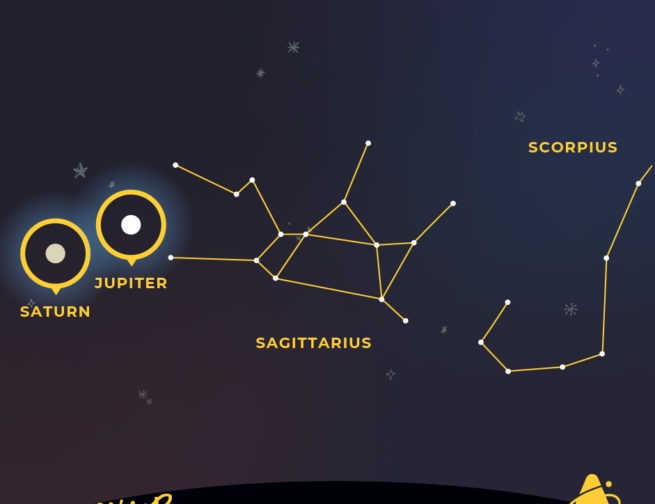
Adler Skywatch: July 2020
Header Image: Look Up to see Jupiter and Saturn are among the stars of Sagittarius the Archer throughout July 2020. With clear skies, a clear view to the eastern horizon, and good timing, you may be able to see all five naked-eye visible planets this month, July 2020. The brilliant planet Jupiter starts the show, […]

Adler Skywatch: June 2020
This year’s summer solstice occurs on the 20th, at 4:44 p.m. Central Daylight Time. On that date the Sun rises just before 5:15 a.m. and doesn’t set until shortly after 8:30 p.m. Between those times, the Sun gets very high in the sky. Keep in mind this takes place in the Northern Hemisphere; those in […]

Adler Skywatch: May 2020
What’s better than the near approach of a comet? How about the near approach of two comets? That’s what we’re expecting during the month of May, 2020! Comet C/2019 Y4, also known as Comet ATLAS, was discovered late last December. It will come closest to Earth on May 23rd, at a distance of about 72 […]
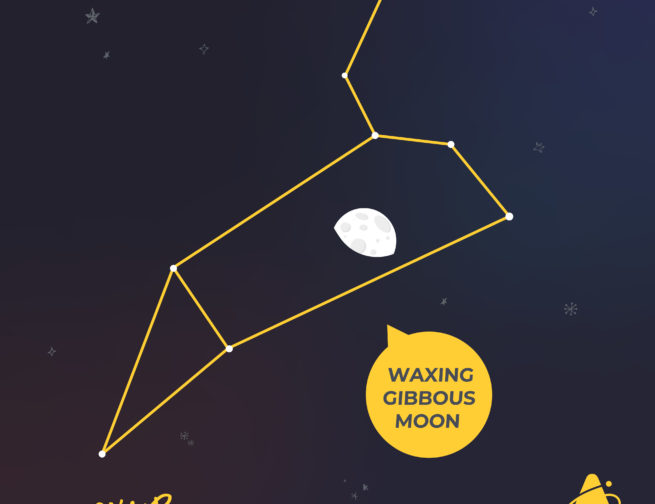
Adler Skywatch: April 2020
Happy April, stargazers! The closest supermoon of the year takes place this month, April 2020. Supermoon is a nickname that describes a Full Moon that occurs within 10% of its closest approach to Earth. Astronomers refer to supermoons as a perigean Full Moon. The April 7th Full Moon is just under 222,000 miles from Earth. […]
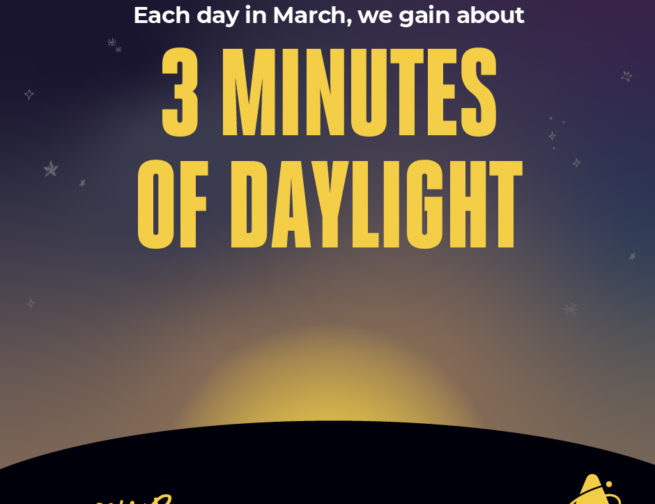
Adler Skywatch: March 2020
The three naked-eye-visible planets outside Earth’s orbit will appear less than 20 degrees apart in the sky this month, March 2020. The planets Mars, Jupiter, and Saturn can be seen low in the southeast just as morning-twilight begins to lighten the sky. Jupiter is the brightest of the three, and it serves as a guidepost […]

Adler Skywatch: February 2020
This month will be a little longer than usual, but still shorter than most months of the calendar — because it’s February 2020. This year is a Leap Year, when the short month of February has 29 days instead of the usual 28. Earth’s actual orbit around the Sun takes about one-quarter of a day […]

Adler Skywatch: January 2020
Happy New Year! Though you likely won’t be able to tell the difference, Earth is at its closest to the Sun for the year this month, January 2020. Perihelion, the point in Earth’s annual orbit where it’s closest to the Sun, occurs each year in early January. This year, perihelion occurs at 1:48 a.m. Chicago time on […]

Adler Skywatch: December 2019
Header Image: Graphic representation of the Winter Solstice which will occur on December 21st, 2019 at 10:19pm. The brightest planet, Venus, begins a run of many weeks’ worth of spectacular viewing in the evening skies this month, December 2019. Venus starts off the month very low in the southwest after sunset, setting only about 90 […]
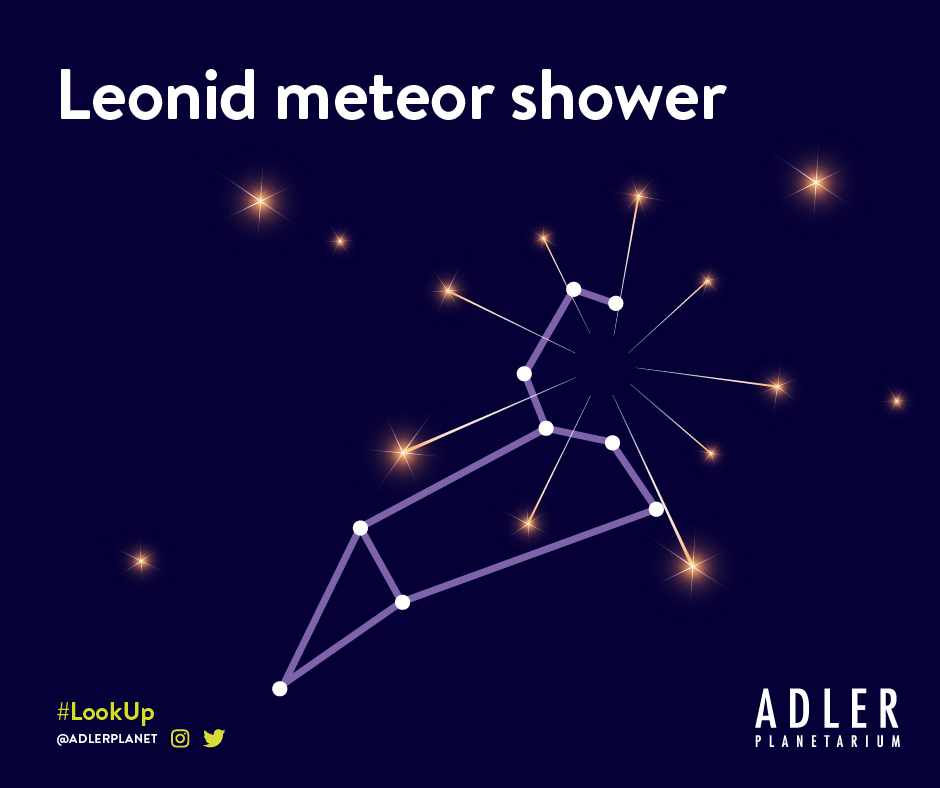
Adler Skywatch: November 2019
Header Image: Graphic representation of the Leonid meteor shower with the constellation Leo. Evenings in the Chicago area are getting dark quite early this month, November 2019. Because Daylight Saving Time ended on the 3rd, the Sun now sets before 5:00 p.m. local time. It won’t be setting after 5:00 p.m. until late January. Shortly […]
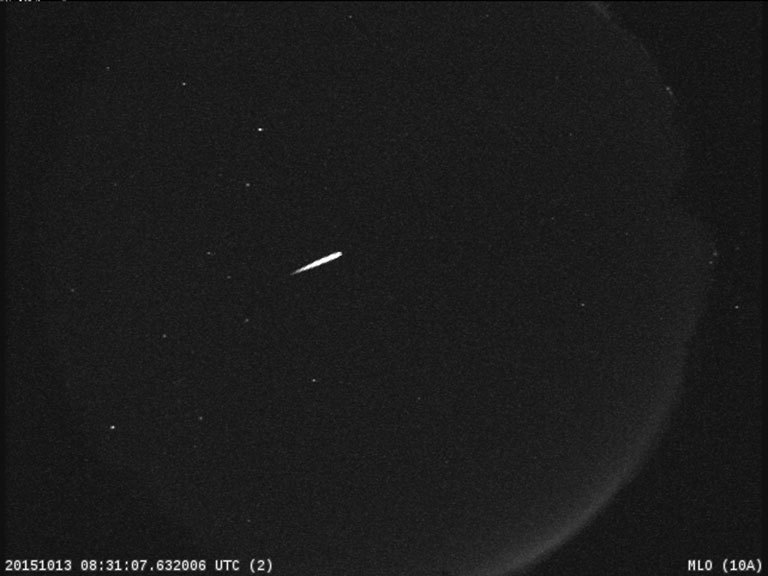
Adler Skywatch: October 2019
Header Image: Orionid meteors appear every year around this time when Earth travels through an area of space littered with debris from Halley’s Comet. Credit: NASA/JPL The days are getting shorter and the nights are getting longer this month, October 2019. But the longer nights mean more night-sky objects to observe. During evening twilight this […]




